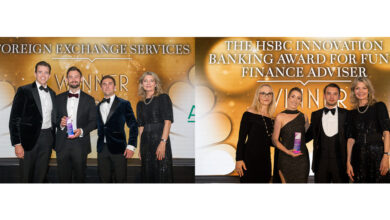Global Mobile Application Marketplace Report 2021: Monetizing Micro Transaction in F2P Model – Creating a Need Approach is Key – ResearchAndMarkets.com

DUBLIN–(BUSINESS WIRE)–The “Mobile Application Marketplace 2021: Market Analysis and Assessment of Future Outlook and Opportunities” report has been added to ResearchAndMarkets.com’s offering.
This report provides a foundation for understanding the state of the market for mobile applications, leading players and strategies, ecosystem dynamics, and the future direction and opportunities for development on mobile platforms.
The evolution of wireless communications, driven largely by the mobile cellular industry, has made society more productive on an anywhere, anytime basis. This has led to ubiquitous wireless devices: smartphones, tablets, and wearable technology. The introduction and usage of mobile applications across mobile devices has significantly transformed end-user expectations about digital communications, applications, content, and commerce.
This report evaluates the ecosystem, looking into who will be the big players in the future and answering key questions such as:
- What are the proverbial killer applications now and in the future?
- How will mobile apps continue to change our lives?
- What platforms are strongest for the development of mobile apps?
- How is developing for mobile platforms different from other application development?
- How will wearable device apps play in the coming years?
- How will 5G impact the marketplace?
Target Audience:
- OTT service providers
- Application developers
- Mobile device manufacturers
- Communications service providers
Key Topics Covered:
1 Executive Summary
2 Mobile Applications Overview
2.1 Definition of a Mobile Applications
2.2 What Separates an App from a Bundled Device Feature?
2.3 Examples of Current Mobile Apps
3 Mobile Platforms (Operating Systems)
3.1 OHA Android
3.2 iOS from Apple
3.3 Other Android versions
3.3.1 Android Open-Source Project
3.3.2 AliOS
3.3.3 altOS
3.3.4 Amazfit OS
3.3.5 BlackBerry Secure
3.3.6 ColorOS
3.3.7 CopperheadOS
3.3.8 EMUI
3.3.9 /e/
3.3.10 Fire OS
3.3.11 Flyme OS
3.3.12 Funtouch OS
3.3.13 Graphene OS
3.3.14 HTC Sense
3.3.15 iQOO UI
3.3.16 Indus OS
3.3.17 LG UX
3.3.18 LineageOS
3.3.19 MIFlavor
3.3.20 MIUI
3.3.21 One UI
3.3.22 OxygenOS
3.3.23 Pixel UI
3.3.24 Replicant OS
3.3.25 TCL UI
3.3.26 Xperia UI
3.3.27 ZenUI
3.3.28 ZUI
3.4 Chrome OS
3.5 Windows Mobile from Microsoft
3.6 BlackBerry OS from RIM
3.7 BREW from Qualcomm
3.8 Symbian OS from Nokia and Accenture
3.9 Firefox OS from Mozilla Foundation
3.10 Sailfish OS from Jolla
3.11 TIZEN from the Linux Foundation
3.12 Ubuntu Touch from Canonical Ltd.
4 Mobile OS, Programming, and App Development
4.1 From Widgets on “Dumb” Phones to Apps on Smartphones
4.2 Hardware and Software Evolution
4.2.1 Hardware Evolution and Handset Manufacturers Market Share
4.2.2 The Smartphone Revolution
4.2.3 Development Platforms
4.2.4 Google Programming Language
4.2.5 Future Directions of Mobile Development
5 Application Development Platforms
5.1 J2ME Platform
5.2 Platform Specific
5.2.1 iOS SDK
5.2.2 Motorola Development Tools
5.2.3 LG Development Tools
5.2.4 Samsung Development Tools
5.2.5 HTC Development Tools
5.2.6 Sony Mobile Development Tools
5.2.7 Android Development Tools
6 Mobile Application Industry Update
6.1 Mobile Development Trends
6.1.1 Mobile Application Platforms
6.1.2 Programming Techniques
6.1.3 Mobile Optimization
6.1.4 Software Development Methodology
6.2 Native Programming Techniques
6.2.1 Size Constraints
6.2.2 Display Constraints
6.2.3 Input and Controls
6.3 Networking and Device Dynamics
6.3.1 Connection Persistence
6.3.2 Dial on Demand
6.3.3 Always On
6.3.4 Connection Types and Limitations
6.3.5 Cellular Data
6.3.6 Wi-Fi
6.3.7 Bluetooth
6.3.8 Bluetooth Low Energy
6.3.9 Mobile Device Computing
6.3.10 Platforms and Speeds
6.3.11 LTE, 5G and Beyond
7 Mobile Commerce and Advertising Applications
7.1 Mobile Commerce
7.2 Mobile Advertising
7.2.1 WiFi
7.2.2 SMS
8 Application Store Case Studies
8.1 Apple App Store
8.2 Android App Stores
8.3 General Mobile App Stores
9 Mobile Application Market Outlook
9.1 Mobile Application Overall Market
9.2 Mobile Sales Potential
9.3 Forecasted Smartphone Sales
9.4 Growth Indicators
9.5 Market Analysis
9.6 Application Store Market Performance
9.6.1 Apple App Store
9.6.2 Android Marketplace Analysis
10 Mobile Gaming Analytics
10.1.1 Monetizing Micro Transaction in F2P Model: Creating a Need Approach is Key
10.1.2 Game Balancing Method in Microtransaction Model
10.1.3 Potential Risk and Solution in F2P Virtual Economy
10.1.4 Product Life Cycle of Mobile Game: Adoption of Moore’s Lifecycle Model
10.1.5 Game Lifecycle KPI framework
11 Wearable Devices Apps and Future Apps
11.1 Fitness Applications
11.2 Wearable Devices Payment Apps
11.2.1 Mobile Wallets
11.2.2 Credit Card
11.2.3 Carrier Billing
11.2.4 Contactless Payments
11.2.5 Other Applications
11.3 Commerce Applications
11.4 Future Wearables Apps
11.4.1 Military Applications
11.4.2 Industry and Enterprise Applications
11.4.3 Wearable Shared Experience Applications
11.4.4 Augmented Reality Applications
12 Carrier and Vendor Adaptations
12.1 Topology and Network Changes
12.1.1 Policy Changes
12.1.2 Open Network Movements
12.1.3 Billing Plan Changes
12.1.4 Infrastructure Hardware Changes
12.1.5 Location-Based Services
12.1.6 Wi-Fi Localized Service Hosting
12.1.7 Handset Manufacturer Changes
12.1.8 Integrating New Handset Features
12.1.9 Evolving the Handset
12.1.10 Multiple Platform Mobile Operating Systems
12.2 5G Impact on Networks and Applications
13 Application Publisher Analysis
13.1 Non-Game Publishers
13.2 Game Publishers
13.2.1 Electronic Arts
13.2.2 Zynga
13.2.3 Supercell
13.2.4 King
14 Future of Technologies, Solutions, and Applications
14.1 Fifth Generation Cellular and Beyond 5G
14.2 Communication Enabled Apps
14.2.1 Direct API Revenue
14.2.2 Data Monetization
14.2.3 Cost Savings
14.2.4 Higher Usage
14.2.5 Churn Reduction
14.3 Embedded Entertainment and Gamified Apps
14.3.1 Making Consumer Engagement Fun via Gamification
14.3.2 Wearable Gamification
14.3.3 Mobile Social Gamification
14.3.4 Cloud Gamification
14.4 Cross-Platform Applications
14.4.1 Smartphones, Tablets, Wearable Tech and More
14.4.2 Mobile/Wireless Apps Everywhere
14.5 Impact of Social, Mobile, Analytics, and Cloud
14.6 Market Sectors to Watch
14.6.1 Artificial Intelligence
14.6.2 Instant Apps
14.6.3 Immersive Technology
14.6.4 Chatbots
14.6.5 Blockchain
14.6.6 Low Code Development
14.6.7 Personalization
14.6.8 Voice Search
14.6.9 Progressive Web Apps
15 Appendix: Select High Growth Mobile Applications
15.1 Mobile Augmented and Mixed Reality
15.2 Mobile Payments and Transaction Services
15.3 Mobile Real-time Communications
15.4 Mobile Telemedicine
For more information about this report visit https://www.researchandmarkets.com/r/cy45hu
Contacts
ResearchAndMarkets.com
Laura Wood, Senior Press Manager
[email protected]
For E.S.T Office Hours Call 1-917-300-0470
For U.S./CAN Toll Free Call 1-800-526-8630
For GMT Office Hours Call +353-1-416-8900




